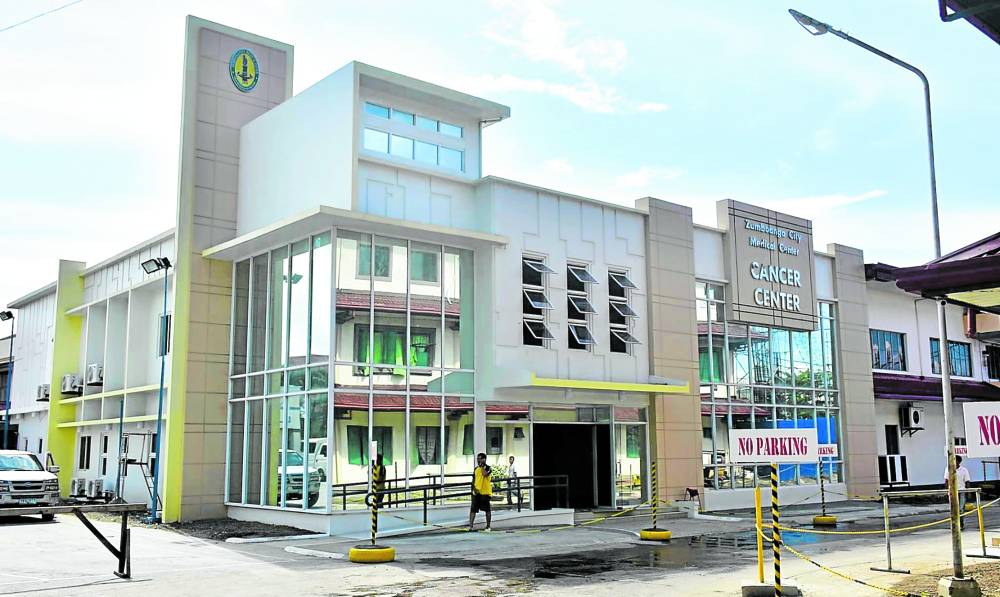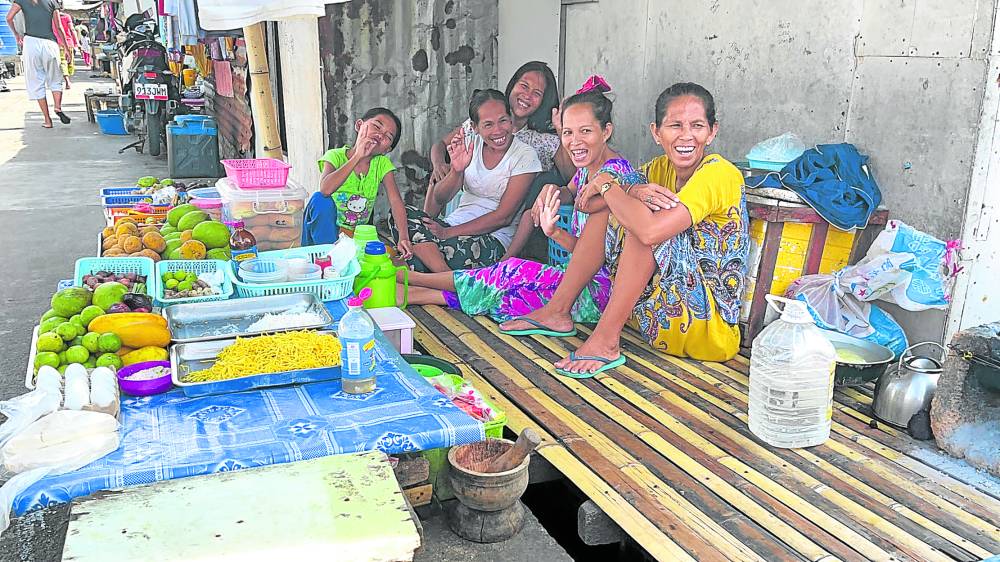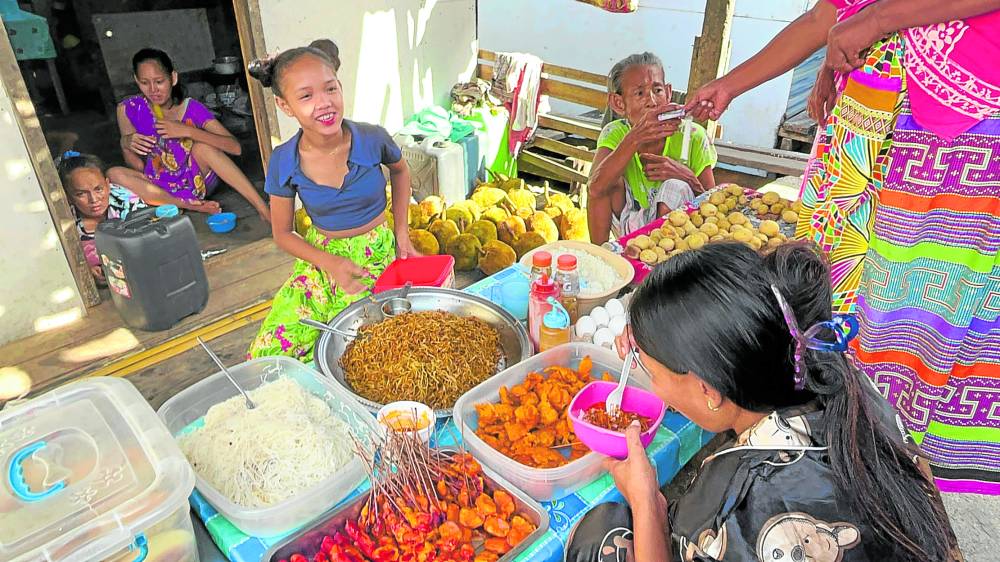Despite risks, Badjaos stick to traditional healing

STATE-SUBSIDIZED CARE Zamboanga City Medical Center operates a government-funded cancer care unit since 2018, providing low-cost relief for poor patients. Despite this, many Badjao women prefer traditional healing due to their strong cultural attachment. —PHOTOS FROM FACEBOOK PAGE OF CELSO LOBREGAT AND JULIE ALIPALA
ZAMBOANGA CITY—In October 2013, while temporarily staying in a crowded tent at Joaquin F. Enriquez Memorial Sports Complex here, Anildaya Jawhari discovered a tiny lump in her right breast which was itchy. Oftentimes, it swells, then she feels gnawing pain.
Jawhari, then 59, was preoccupied with her family’s situation after their home in Barangay Rio Hondo was destroyed during the 20-day siege of Moro National Liberation Front members a month earlier that she had no time to think seriously about the condition.
“We thought it was just boil since the evacuation center was congested, no water, no electricity [apart from having] meager food, no privacy,” Lorna Isnani, one of Jawhari’s seven children, recalls their situation then, speaking in Badjao and translated by Satulnina Aril, a purok leader of Rio Hondo’s Sitio Hongkong.
A medical mission for evacuees gave Jawhari an opportunity to have her breast checked during which doctors referred her to a hospital for thorough examination.
The procedures she underwent cost her family a fortune. Isnani recalled that her mother sold some of her jewelry in order to augment their meager income from selling fish for her medical needs. A pair of earrings and a ring were only enough to defray a mammography in a private hospital.
Article continues after this advertisementCostly care
Eventually, Jawhari was told she had breast cancer, as evidenced by test results. But the good news was it can be removed by surgery, although it would entail a huge sum.
“All of us have to raise money, even the youngest member of the family was selling fish, we went beyond our temporary community. Even my mother was forced to sell fish outside the grandstand,” said Isnani, who had to learn the ropes of cancer care the quick and hard way.
“I do not know anything about cancer [but] her condition forced me to learn and appreciate the procedure, where to go, whom to ask for help, how to beg for money from politicians, how to read prescriptions and where to buy cheaper medicines,” she added.
With the help of Sophia Samman, a Badjao mother with ovarian cancer who later died of the disease in 2018, Isnani was able to identify and reach out to benefactors.
After surgery, the family had to contend with daily medication needs, amounting to P2,000. This pushed them to consider “natural healing” as they know it in Badjao culture. Isnani said Badjao friends suggested boiling the leaves of paragis (Eleusine indica), also known as goosegrass, so they nearly weeded out paragis grass inside the Rio Hondo Elementary School compound.
Jawhari eventually died on Aug. 6, 2017.
Jawhari’s fellow evacuee Linda Muyong, a Badjao vendor, also experienced itchiness from a small lump on her breast. Thinking it was a boil, she pinched it with a needle to remove the pus, and then used cut banana stems and powdered aspirin to relieve the pain and inflammation.
The prick soon developed into a wound that she just silently bore for three years. Prior to her death in May 2021, her fellow evacuees recalled that Linda went to see an umboh, or Badjao healer, in Barangay Recodo.
She didn’t return to her shelter in Masepla, Barangay Mampang, after that, which meant she died there. She was eventually considered a COVID-19 case as she had no medical records as a cancer patient.
Badjaos and the Sama Dilaut tribes have a unique health seeking behavior, says Dr. Shadrina Tahil Sarapuddin, a medical specialist and spokesperson for Zamboanga City Medical Center (ZCMC).
Sarapuddin, who studied folklore medicine in Tawi-Tawi for 14 years, described Badjaos as pagans and didn’t subscribe to Western medical treatment.
Rooted in culture
“They have this belief that what they experienced is the Almighty’s gift,” Sarapuddin said, adding that Badjaos seek help from healers, elders and their ancestors.
“It’s their culture, it’s their belief, they have what we call umboh [and] their great ancestors. They believe that if someone gets sick, they have to see an umboh. They believe in the Great God as well, but their ancestors play an important role in their lives and it affects their present life. Regardless if the illness is cancer, pneumonia, cough or colds, they would not really go to the doctors first. Perhaps the Gen Z (members of the younger generation), they already know.”
“They prayed with their umboh, they asked guidance from their umboh, they sought healing from their umboh,” Sarapuddin said, saying that an umboh is someone respected from the tribe, or a family member whom they believe is gifted for healing.
Baria Labiulla, a Sama grandmother, explained that an umboh “is like an angel in a human form, usually he or she is the eldest in the tribe.”
When someone is ill, the entire family goes to the umboh for help. “The umboh will make some incantation while holding a glass of water. After the prayer, the umboh taps the water and wipe it on the head of the patient, and let the patient sip half of it. Later, the umboh drinks what remains in the glass,” Labiulla said.
The patient has to stay in the house of the umboh until he or she gets better. But if the patient’s condition gets worse, the umboh advises the family to prepare a meal, consisting of freshly harvested rice boiled in turmeric, to be shared in the community. “That would mean to prepare for the patient’s death and for the family’s acceptance of losing a loved one,” Labiulla said.
Councilor Aida Paniorotan, a mandatory indigenous people’s (IP) representative in the city council, admitted that different tribal groups in the city don’t subscribe to Western medicine.
“Even I myself reflected for a long time before giving in to COVID vaccination. We IP groups would resort to traditional medicine and healing rather than going to a hospital,” Paniorotan said.
“Our elders and healers have knowledge which herbs to use for particular illnesses. [We believe that] it is safer since it is not synthetic; allowing any foreign chemical to get inside our body is considered to be against our culture,” she added.
Ethnic disaggregation
City health officer Dulce Amor Miravite admitted that they don’t have a particular study about the health seeking behavior of IPs, especially Badjao. What they have are only data collated every year of the number of residents getting sick and dying of particular diseases.
“Breast cancer is treatable for as long as the patient seeks immediate medical attention,” Miravite said.
Cancer is the fifth leading cause of mortality in Zamboanga City, according to Miravite.
The City Health Office (CHO) recorded 223 cancer deaths in the city from January to June last year, or an attack rate of 22.26 per 100,000 people. The other four were cardiac arrest with 473 cases, myocardial infarction with 357, cerebrovascular disease with 313 and acute coronary disease with 252.
From 2020 to 2022, a total of 179 women in the city died of breast cancer, mostly aged above 51.
While the CHO caters to indigent patients who seek medicines, they can only mostly cater to those with hypertension, diabetes, pneumonia, cough and colds, and vaccines for animal bites. For serious and longer treatments, like cancer, patients are referred to ZCMC which has a cancer care unit starting in 2008.
Sarapuddin said they were able to attend to 462 breast cancer patients from 2021 up until August 2023. The hospital received P12 million in funding for 2022 and P14 million for 2023 for cancer care services of indigent patients. But despite the availability of this service now, Badjaos find it difficult to access.
“We only have numbers of patients, we don’t categorize patients according to tribe, and based on our data (462 patients), we don’t have Badjao as a cancer patient, not even for other IPs, perhaps Tausug or Yakan,” explained Sarapuddin.
“It’s a good realization that we have to get data according to ethnicity or tribe, so we can understand their uniqueness when it comes to health seeking behavior,” Sarapuddin added.
ZCMC is now considering the case of Jawhari in their adopt-a-community project so they can reach out to a wider population in their breast cancer awareness campaign.
Identity documents
Sarapuddin said ZCMC attends to indigent patients regardless of tribes for as long as they present their birth certificate, valid government ID, and should be a PhilHealth member.
The hassle of producing these documents “discourages our people to avail of Western medication,” apart from the thought of possibly spending so much, Paniorotan noted.
Paniorotan said that many among the five major IP groups in the city—Sama, Subanon, Badjao, Kalibugan and Yakan—are not documented or do not have government identification cards.
This is especially true among Badjaos. “You don’t expect them to have birth certificates, you don’t expect them to have valid IDs,” said Sarapuddin.
“You would not expect them to have a longer life span because when they have a wound, for example, they are averse to seeking medical treatment from health facilities. They are part of the population that are difficult to convince to seek a doctor, to get vaccinated, or to go to health facilities,” Sarapuddin lamented.
But she hopes that convincing Badjaos to get identity documents will help begin turning the tide against their fatal behavior toward modern medicine.
(Editor’s Note: This story was produced with support from the Philippine Press Institute and Novartis.)

